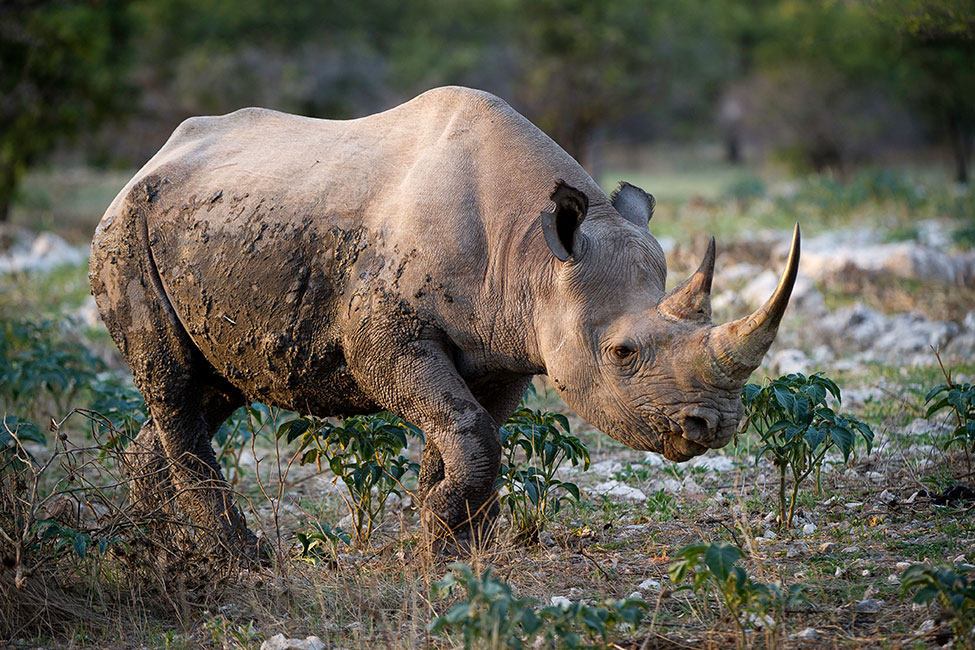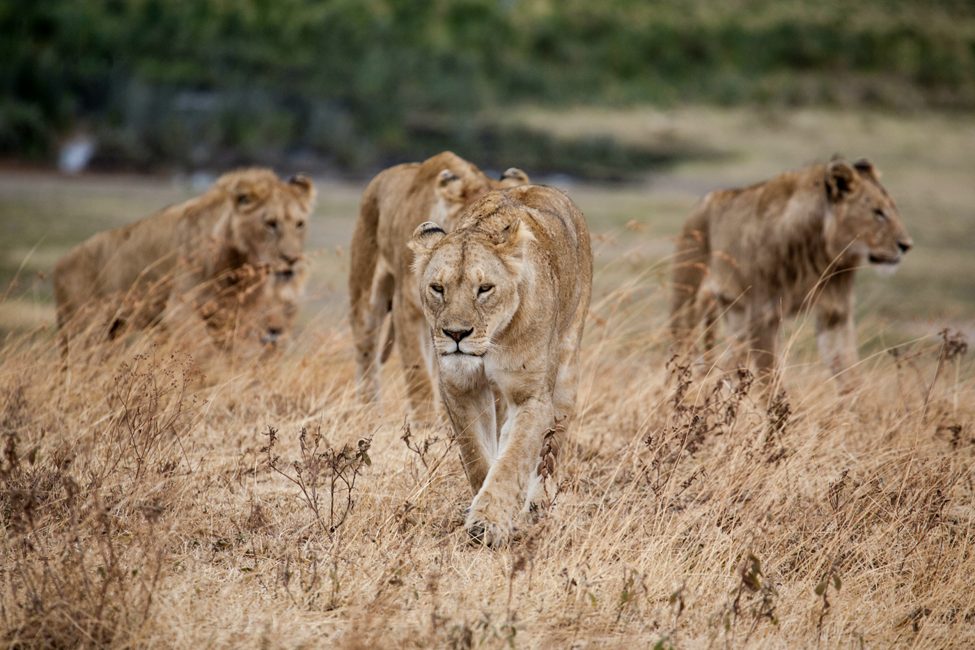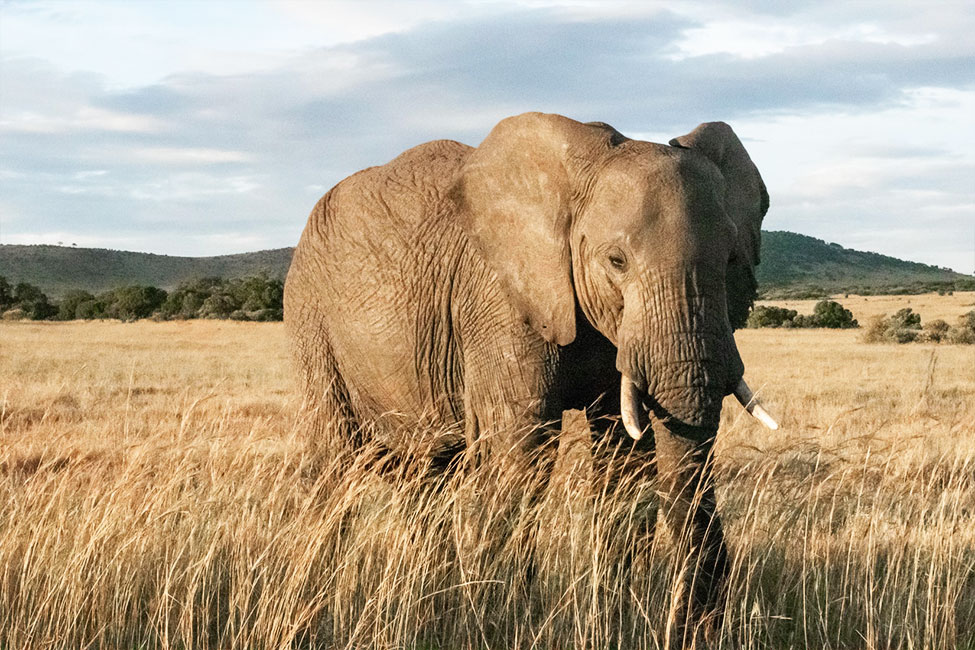Your Guide to Africa’s Big Five
On an African safari, “the Big Five” is a term you will hear a lot. So what are the Big Five?
The Big Five are some of Africa’s most celebrated large mammals: the lion, the leopard, the Cape buffalo, the elephant, and the rhinoceros.
The Big Five grouping has a long history. European colonists in the 1800s believed these animals were the hardest to hunt. For that reason, they are also sometimes called “the Big Five Game.”
Today, it’s more common for safari-goers to capture these animals on film. Game drives, walking safaris, photographic hides, and boat cruises are popular ways to see them. Encountering each of Africa’s Big Five in the wild is an achievement to celebrate.
Read on to learn more about the African Big Five:
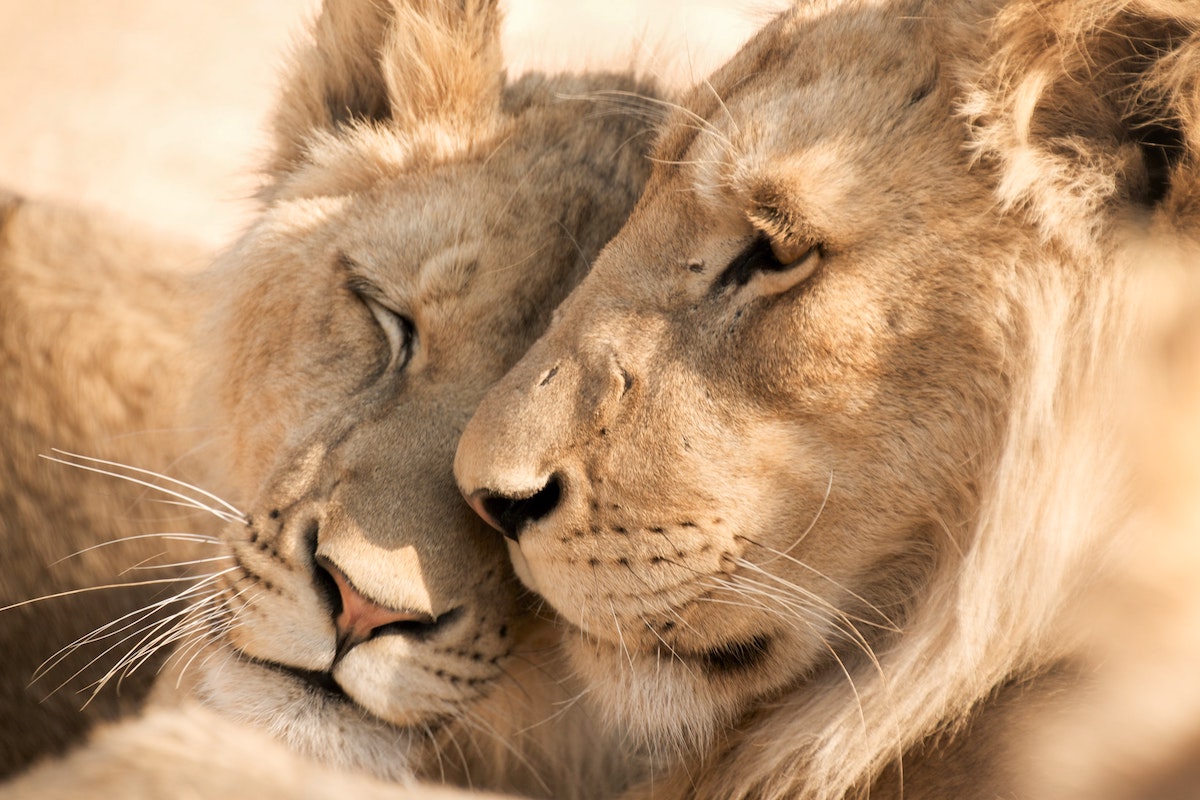
Two adult lions nuzzle in South Africa. Photo by Andrea Brataas.
The Proud Lion
Whoever named the lion “King of the Jungle” must never have seen one in real life. Lions prefer open plains to rainforests. This is great for safari-goers, because it makes them easier to see!
Another wonderful thing about lions? When you see one, you are likely to see several. Lions usually live in prides—groups of several adult females, one to four adult males, and cubs.
However, you may sometimes see a young adult male out on his own. Why? Young adult males often get kicked out of their pride when they reach adulthood. This helps prevent inbreeding. The young males spend a few years wandering as loners or in pairs before joining a new pride.
Unlike most large cats, lions prefer hunting in daytime. With a little luck, you may encounter a lion pride out on the prowl for antelope, zebra, or even another member of the Big Five, particularly elephants and Cape buffalo. These last two are not their favorite prey, however, because their size and strength make them formidable opponents.
While you will usually find lions in the grass, a few do climb trees. This behavior has been observed in the Serengeti and Lake Manyara National Park in Tanzania, and around Lake Nakuru in Kenya.
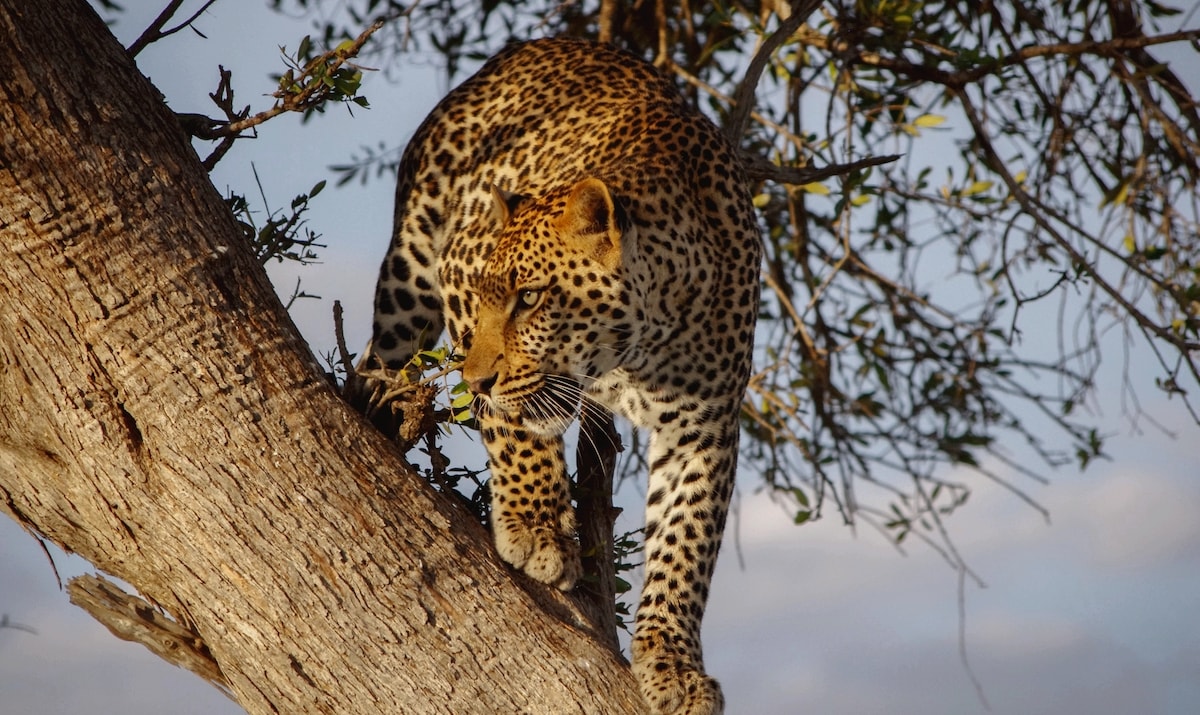
A leopard looks out from a tree in Masai Mara, Kenya. Photo by Hidde Rensink.
A Graceful Predator: The Leopard
To see a leopard on safari, look up! Leopards sleep during the day, often in the branches of trees. From there, they can safely watch for threats or potential meals.
It’s rare to see leopards out hunting when it’s light out. They do most of their hunting at night, but have occasionally been seen on daytime hunts in Tsavo Conservation Area in Kenya.
Leopards are incredibly adaptable for large cats. They can thrive in both mountainous jungles and grassy plains. And they are not picky about what they eat. Leopards have made meals of more than 100 species, from small monkeys to giraffes. But they tend to prefer medium-sized animals like antelopes.
Occasionally, leopards come into the world with black fur, producing “black panthers.” In Kenya, black panthers have been reported around Mount Kenya, the Aberdare Mountains, and Laikipia County, west of Samburu National Reserve. Black panthers have also been spotted recently in South Africa.
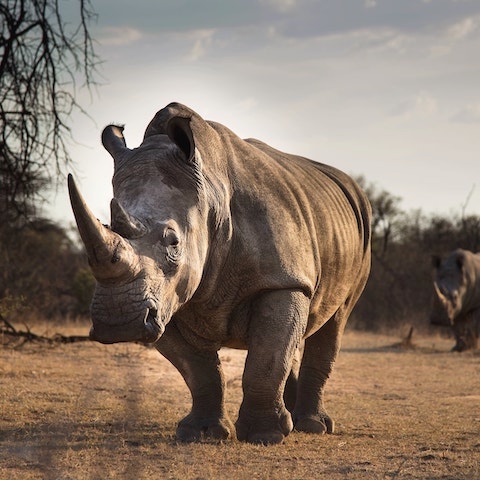
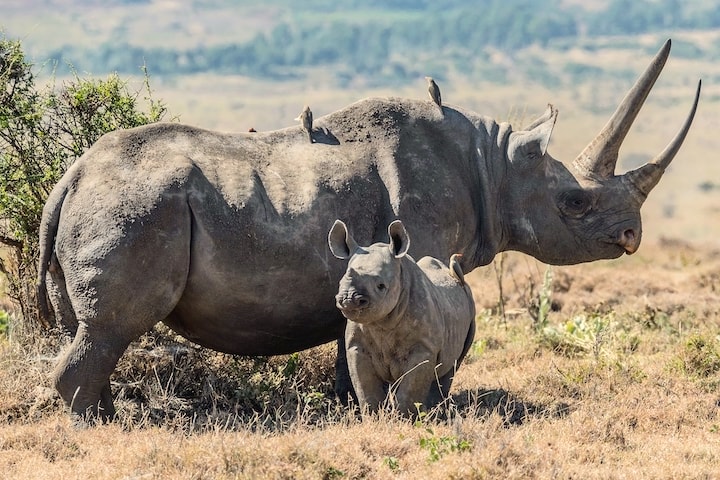
A white rhino stands on the plains of South Africa. Photo by Keith Markilie. A black rhino mother and calf relax in Kenya. Photo by David Clode.
The Regal Rhinoceros
Standing near a rhinoceros, you may feel transported back to an era when megafauna ruled the earth. African rhinos are taller than most humans and can weigh as much as an SUV!
Africa has two species of rhinoceros: the white rhinoceros and the black rhinoceros. Their names have nothing to do with their color. Rather, “white” might come from the word wyd (“wide”) in Afrikaans, a language spoken in southern Africa. It may describe the shape of the white rhino’s wide, squarish lips. Black rhinos, on other hand, have pointed lips. They got their name to contrast them with white rhinos.
What’s the difference between the two species? Besides the mouth shape, white rhinos tend to be larger. They stand up to six-and-a-half feet tall and weigh up to 5,000 pounds, while black rhinos can reach about five-and-a-half feet and weigh up to 4,000 pounds. You can also tell them apart by what they eat. White rhinos graze on grass, while black rhinos’ pointy lips are perfect for browsing on bushes or shrubs.
Unfortunately, rhinos are under pressure from poaching. Their horns are sold on the black market, leading to the decimation of some subspecies. The western black rhino, one of four black rhinoceros subspecies, went extinct in 2011.
Northern white rhinos used to live across eastern and central Africa. But as of mid-2025, only two northern white rhinos remain. They are both females and live in Kenya’s Ol Pejeta Conservancy, which is working to revive the species with advanced reproductive technologies.
Southern white rhinos offer a hopeful story. One hundred years ago, only about 20 of them lived in the wild. Today, 20,000 individuals roam South Africa, Namibia, Kenya, Uganda, Zambia, and Zimbawe.
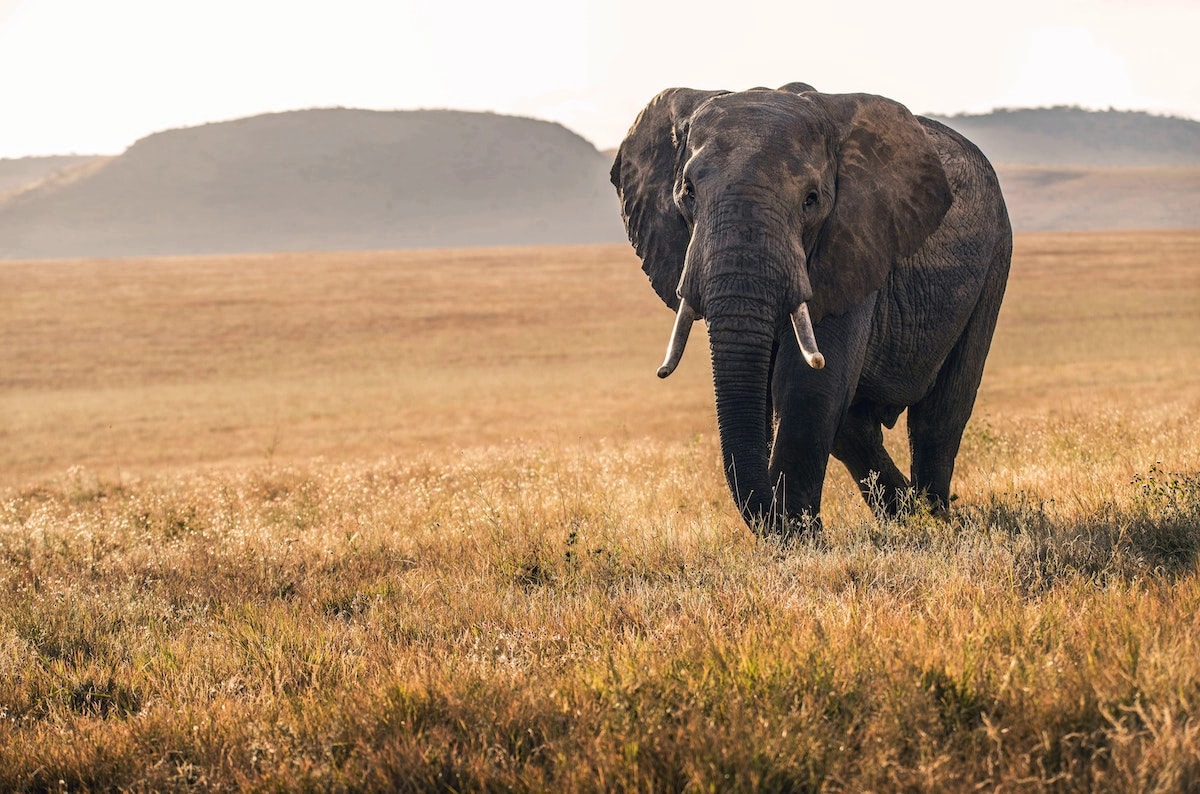
An elephant walks across the plains at Lewa Wildlife Conservancy, Kenya. Photo by David Clode.
The Elephant: Earth’s Largest Land Animal
Did you know there are actually two species of African elephants?
The elephant we usually think of as “the African elephant” is technically the African savanna elephant, also known as the African bush elephant. (“Bush” is used in Africa to describe any wild area.)
The African savanna elephant is the largest land animal alive today, reaching up to 13 feet tall and weighing 6 to 11 tons! Despite its name, it can live in grassy savanna, forest, or desert. You can find African savanna elephants in all African mainland countries where Ujuzi offers safaris.
But Africa has another elephant, as well—the African forest elephant. It is a full yard shorter than the African savanna elephant, and it weighs about half as much. African forest elephants live in tropical forests in western and central Africa.
Elephants are social animals. Adult females and their children live in family groups headed by an older female who can help the group survive through tough times. She shares her knowledge with younger females so they can lead when the time comes. Adults and adolescents work together to care for calves.
Adult males socialize with family groups during mating season and births. Otherwise, they spend much of their time alone. But they still pay attention to social cues. Studies in South Africa have shown that younger bulls learn appropriate behavior by observing and interacting with older bulls.
Where can you see the most elephants? The Chobe Riverfront in Botswana‘s Chobe National Park is believed to have the world’s largest concentration of African savanna elephants.
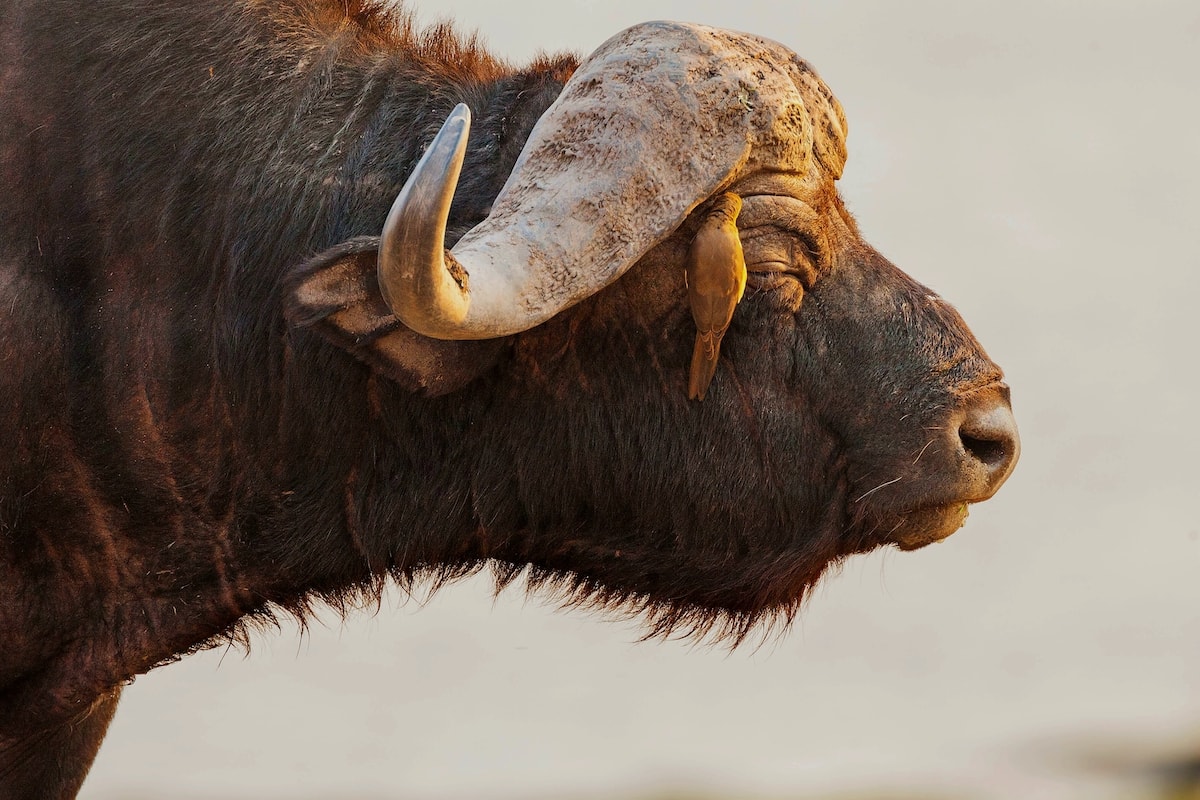
An oxpecker removes insects from the skin of a Cape buffalo in Botswana. Photo by Chris Stenger.
Cape Buffalo: The World’s Fiercest Bovine
It might look like a cow, but it’s far from tame. Also known as the African buffalo, the Cape buffalo is large and fierce. Few predators are willing to confront the Cape buffalo. Its sharp horns and massive size—up to one ton—offer a formidable defense.
To further stave off predators, Cape buffalos live in groups. Females and young travel in large herds year-round, while adult males stay with the herd during the wet season and then peel off to form smaller bachelor groups in the dry season.
It’s a matter of safety in numbers. When a predator attacks, group members come to the victim’s defense. Cape buffalos have been known to fight off and even kill lions and crocodiles.
Cape buffalo live throughout East Africa and much of southern Africa. Herds wander up to four miles a day in search of coarse grass and reeds to eat. Because of this diet, they are typically found in wetlands and savannas. But you might see them in tree-covered areas, as well.
See the Big Five
Encountering all of Africa’s Big Five is the aim of many safari-goers. The Big Five are so popular that they have spawned other “to see” lists throughout Africa, such as the Little Five of Africa and the Little Five of Namibia.
Many African parks are home to all of the Big Five. A few include:
- Tsavo Conservation Area, Shaba National Reserve and Aberdare National Park, Kenya
- Kruger National Park, South Africa
- Okavango Delta and Chobe National Park, Botswana
- Ngorongoro Crater, Tanzania
- Murchison Falls, Uganda
- Akagera National Park, Rwanda
- Mana Pools National Park, Zimbabwe
- North Luangwa National Park, Zambia
Ujuzi African Travel can help you reach your goal of seeing the Big Five and other African animals. Before your trip, we’ll advise you on the best destinations and times of year for seeing the Big Five. On your safari, expert guides will help you track these incredible animals and create amazing memories. Contact us today!
Sample These Big Five Safaris
Sign up for the Ujuzi Newsletter!
From top travel tips to innovative safaris and conservation movement, get inspired to plan your next African safari!
By submitting this form, you are consenting to receive marketing emails from: . You can revoke your consent to receive emails at any time by using the SafeUnsubscribe® link, found at the bottom of every email. Emails are serviced by Constant Contact


